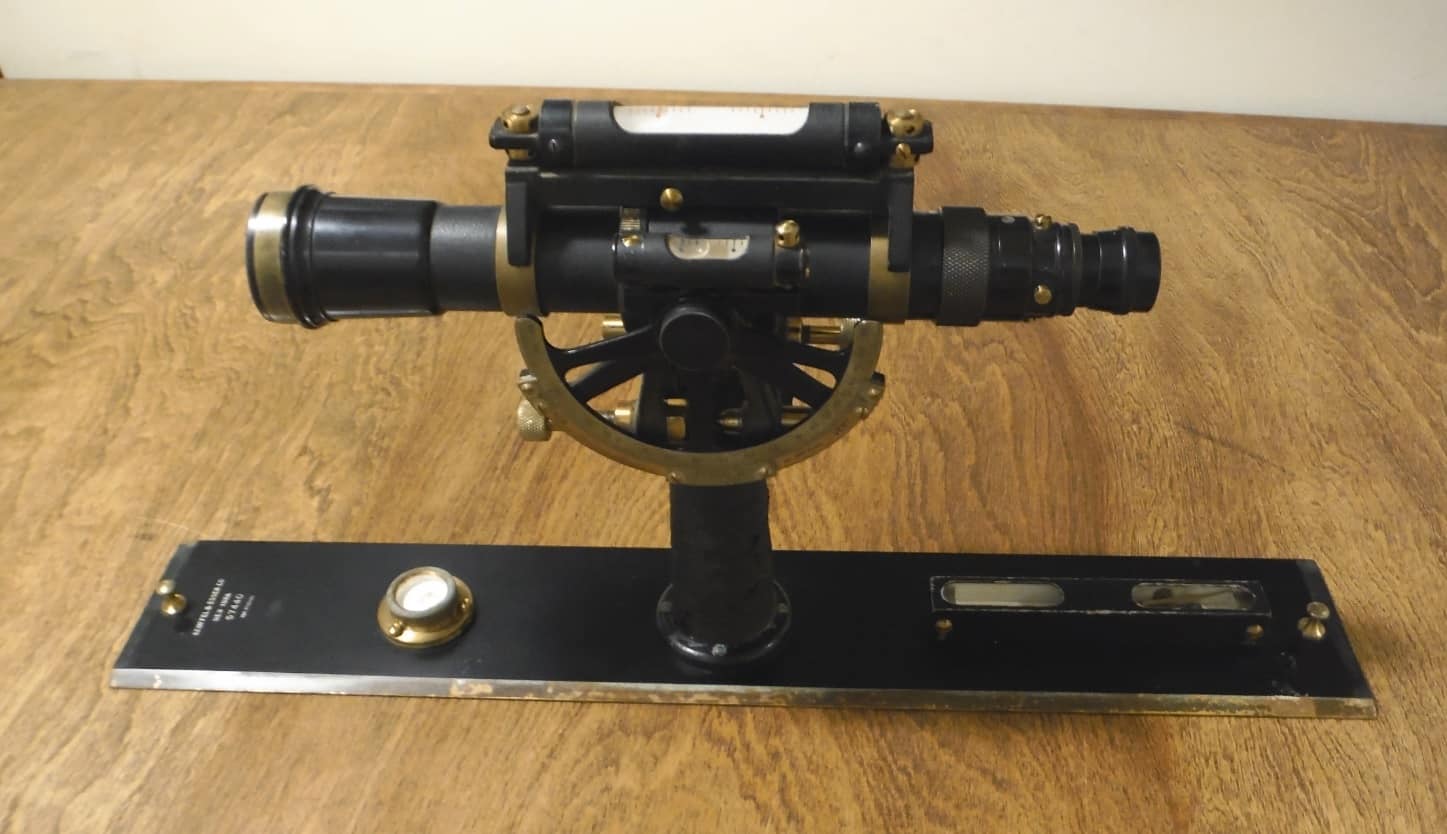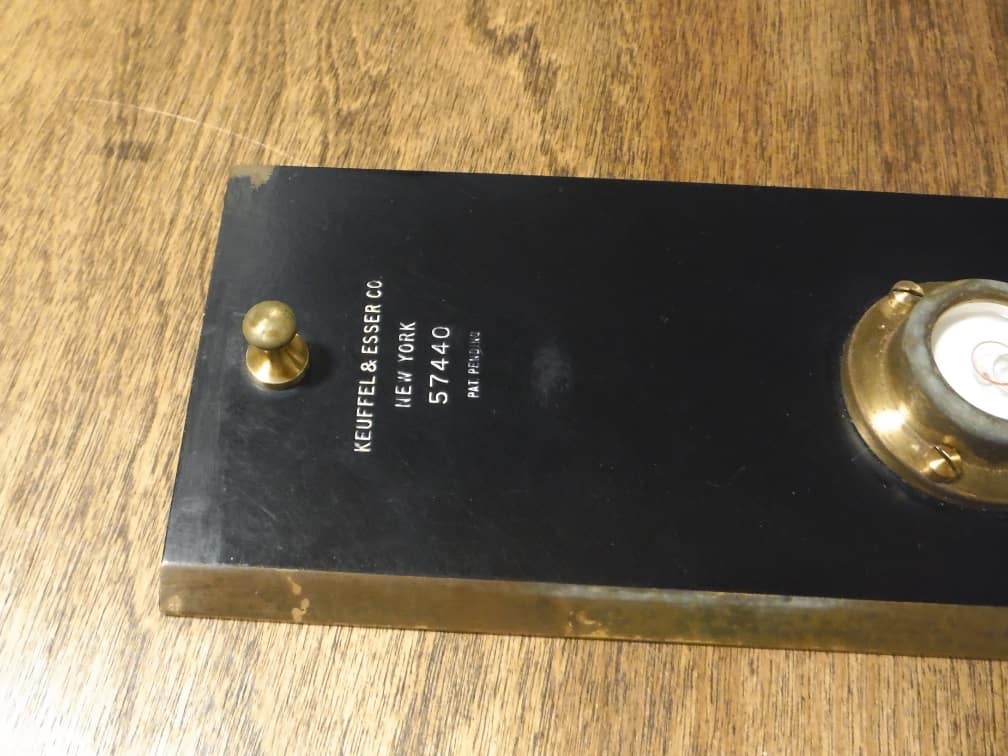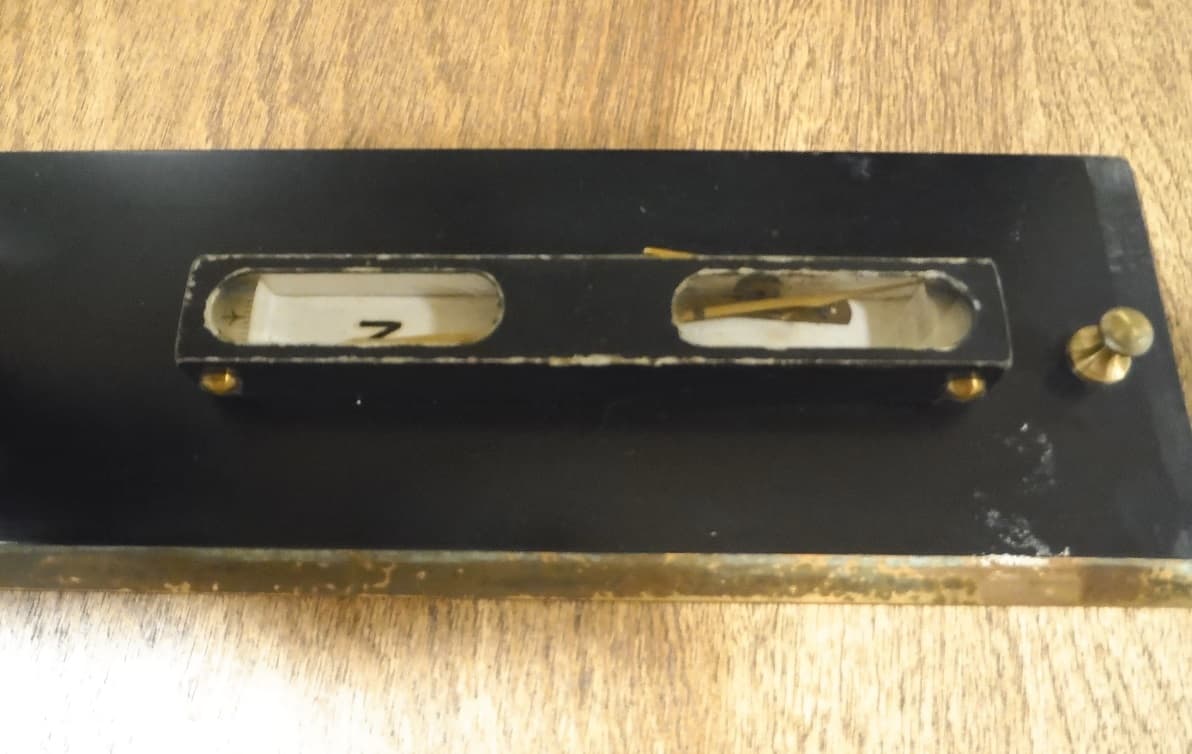This is my K&E alidade. Serial No. 57440. Hopefully some of you older guys can answer my questions.
1. There is no fixed scale on the blade, but there appears to have been something taped on the beveled edge at one time. Were scales replaceable depending upon what scale you wanted to use?
2. Did the zero end of the scale start at the far eyepiece end and therefore giving you more length? Was the zero point on the scale the pivot point?
3. The vernier on the side has "HOR" on the left and "VERT." on the right. When the scope is horizontal, the vernier is at 30. One part of the vernier is graduated 0 - 90, another is 80 - 100 in both directions. I do not understand the horizontal aspect in regard to a horizontal circle since the alidade is fixed.
4. What are the two brass knobs at the center of the ends used for?
5. Any idea as to the age? The patent date says September 21, 1915.
Zero is the pivot point; the 2 brass knobs were to make it easy to slide around on the paper.
It's been a LOOOONG time since I used one of these; but I seem to remember reading the vernier in a way that made it easy to calculate horizontal and vertical distances. I will have to rack my brain to figure that one out; I'll get back to you...
The vertical had something to do with the stadia distance if I remember right. If you were reading 3.00 between the stadia hairs and you were one step above horizontal then your crosshair was 3.00 above level. I seem to remember 50 being level but that was 1979.
Or I could be remembering it wrong, I do remember drinking a lot back then. At least I think that was me.
James
1. Not all had scales, this one only has a straight edge
2. Zero is at any point along the straight edge, straight edge gives line only
3. Never saw a scale like that
4. The brass knobs are used to point the alidade.
5. The year can be found using the serial number, my guess 1930
The way I remember it is you read the vertical scale and subtract 50. 52 would be is 2 is + 2.00 at 100 feet. The horizontal is a percent of the distant. If you read 100 feet and the horizontal scale equals 98, the horizontal distance is 98 feet. I have never used an alidade with built in scale. I used a manual indexing alidade back in the 70s. It was an analog data collector. It was considered a point of honor to be able to do everything in your head without a calculator. I guess that officially puts me in the old guy category.
Here's a link to the explanation of graduated vertical arc:
"In this close up photo of the K&E 5093A Scale you can see that when the alidade is level the Lower center vernier will read 30 degrees, not zero. This is to avoid blunders which probably were common if level was 0 and there were + and - numbers on both sides of 0 where a sign error would be a blunder. Vertical angles from -30 deg to +30 deg can be read as 0 to 60 deg. That is the limit of vertical angle measurements, since the rest of the scale is used for the horizontal and vertical distance factors.
On the left is the "HOR" vernier and on the right the "VERT" vernier. These are used to convert the slant distance measured using the stadia method into horizontal and vertical distances. When the alidade is level the HOR correction reads 100% and the vertical correction reads 50% (note you need to subtract 50 from the VERT reading to get the correction factor that's multiplied times the slant distance.
Notice that when the alidade is level all three readings are very much different. Again, I'm sure this is to aviod blunders."
J. Penry, post: 364750, member: 321 wrote: This is my K&E alidade. Serial No. 57440. Hopefully some of you older guys can answer my questions.
1. There is no fixed scale on the blade, but there appears to have been something taped on the beveled edge at one time. Were scales replaceable depending upon what scale you wanted to use?
2. Did the zero end of the scale start at the far eyepiece end and therefore giving you more length? Was the zero point on the scale the pivot point?
3. The vernier on the side has "HOR" on the left and "VERT." on the right. When the scope is horizontal, the vernier is at 30. One part of the vernier is graduated 0 - 90, another is 80 - 100 in both directions. I do not understand the horizontal aspect in regard to a horizontal circle since the alidade is fixed.
4. What are the two brass knobs at the center of the ends used for?
5. Any idea as to the age? The patent date says September 21, 1915.
Jerry:
Here is a diagram from my ICS book that shows the Beaman Stadia Arc. I couldn't get the rotated file to save, it kept the original scanned image.









